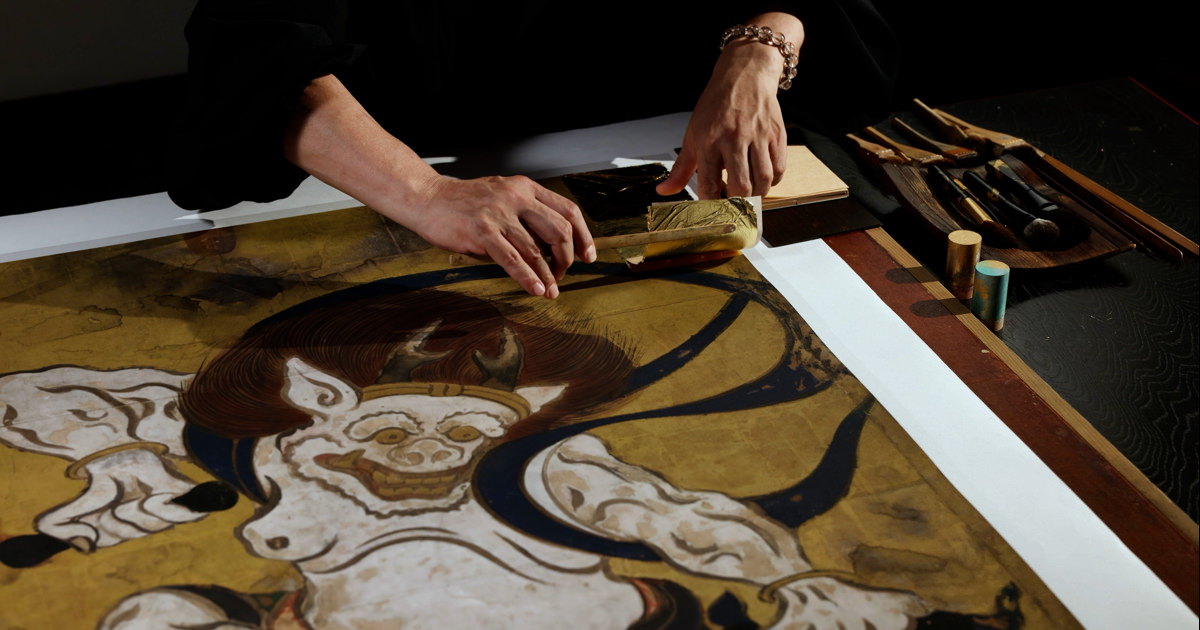Facsimiles of Sesson Shukei (Japanese, 1504-1589). Dragon and Tiger. Pair of six-fold screens; ink on paper, 171.5 x 365.8 cm, 157.2 x 339.0 cm. The Cleveland Museum of Art. Purchase from the J.H. Wade Fund, 1959.136.1-2
These images are based on the high resolution facsimile produced by the Tsuzuri Project. Unauthorized copying, duplication, or transfer of these images is strictly prohibited.
Dragon and Tiger
High-resolution facsimiles
- Material
- printed on washi paper
- Period of creation
- Tsuzuri Project Stage 3 2009–2010
- Recipient
- Sounji Temple (Daitokuji school, Rinzai sect)
Original
- Artist
- Sesson Shukei
- Historical era
- Muromachi (16th century)
- Material
- ink on washi paper
- Medium
- Pair of six-fold screens
- Size
- Each screen H157.2 × W339.0 cm
- Collection
- The Cleveland Museum of Art
Description
Sesson was born in Hitachi (current Ibaragi prefecture), and began studying painting with Zen influences at an early age. After he developed his distinct painting style, Sesson established himself as an artist and began traveling throughout Japan. This work was painted while he worked in Odawara, circa 1550. The dragon is calling for rain, symbolizing spring which is considered the fountain of life. On the other side, the tiger calls for the wind, symbolizing autumn which is considered the end of life. While dragons and tigers are usually associated as sacred and ferocious, in this painting, both animals have rather amusing expressions. The tiger appears to glare at the dragon with eyes of a cat, and something about the look on the swirling dragon‘s face appears affectionate. On top of his expressive accuracy, Sesson skillfully lends a playful flair to an otherwise magnificent theme.




